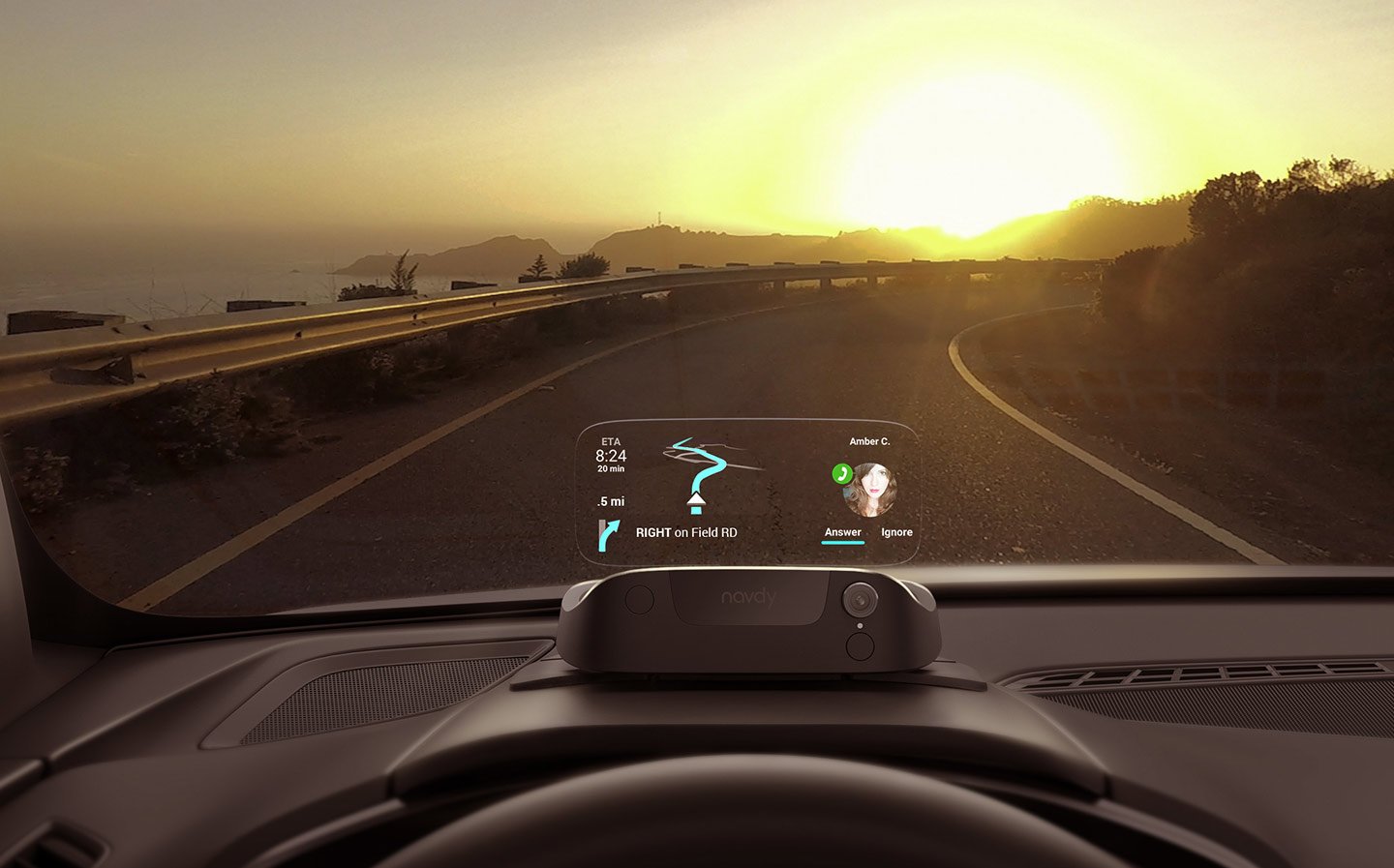Products: Navdy car dashboard display review
Don't call me HUD
- Rating ★★★★☆
- RRP £599.99
- Buy one at Amazon.co.uk
DON’T CALL Navdy a head-up display. Oh no, it’s an “augmented reality device”, according to the UK distributor, who let us get hands-on during an early test on British roads.
This loftier label is more apt, we were told, due to the fact that the Navdy projects information not just onto a screen on top of the dashboard but makes it appear to float one metre ahead of the windscreen, directly in your field of vision, and alters your view of the world as you drive.
For our money, though, it’s not true AR in that it doesn’t use cameras to view the road ahead and then create a composite view of the world. True AR navigation would appear to paint the road in front of your car yellow, for example, to mark your route, or draw boxes around cars ahead of you, marking their distance. Instead, Navdy presents you with familiar-looking nav-style arrows and symbols that don’t interact with the environment.
Browse NEW or USED cars for sale on driving.co.uk
Regardless of the terminology there are a number of tricks up its sleeve that mark it out as a gadget of note for drivers. That screen, for example, is not just a cheap bit of Perspex, it’s a lens dubbed the “combiner” that gives the Navdy’s projected image its focal length and clarity. The image is up to five times brighter than the brightest smartphone, says Navdy, allowing it to be visible in bright sunshine, and a sensor on front of unit adjusts brightness based on light conditions.
Live navigation info comes from Google maps, which is a leading system that incorporates traffic conditions, but it is merged onto map imaging from Here maps, which is hardcoded into the Navdy. This means that when the 4G mobile network connection drops, perhaps by venturing into a remote location, you won’t be left stranded with no routing.
A quirk of the American-designed and built Navdy, though, is its inability to understand the concept of a roundabout. It displays them without difficulty – Google has that covered – but the Navdy’s in-built voice directions refer to them (at present) as “traffic circles”. This may prove irritating for some Brits, but it’s not a critical issue for daily use.
There are advantages over the roundabout-recognising likes of Android Auto, though, which is now available as a standalone app for smartphones. For example, unlike the Google system, navigation doesn’t disappear when a call comes in, displaying both side-by-side in what the company calls “glances”, meaning you shouldn’t miss your turn if the phone rings at a complex junction.
In addition, Navdy connects to your car’s on-board diagnostics (OBD-II) port, which is standard on most vehicles built since 1996, and feeds power and car telematics to the device. This means the Navdy can display your speed, revs, fuel level and range, MPG and other information on top of displaying navigation, calls, apps and music that is sent from your phone. The idea that it brings together all the information you need in one place, and can all be controlled and viewed without you needing to take your eyes off the road.

By default Navdy is not connected to any features, so you have to opt in to the likes of your calendar, music, text messages, and Twitter. The less you have running, the less distracted drivers are likely to be, and Driving would always recommend switching off mobile devices while driving. However, given our “always-on” culture and the fact that currently the law only bans handheld devices, this may not be realistic for the majority of motorists, so the Navdy offers a way for drivers to keep their eyes on the road.
Control is via a dial that you clip to your steering wheel, as well as voice and gesture recognition. The latter is limited to swipes of the hand left (accept) and right (ignore), after user feedback that revealed too many gestures can be confusing. It takes some getting used to – with no obvious “Back” button, finding our way back to menu list wasn’t as intuitive as it could have been.
And in case you were wondering, the device can be easily removed and hidden in your glovebox.
Sales of the Navdy are expected to start in the UK market in low volumes from March 6, 2017. However, it was launched last year through the Kickstarter website and received 20,000 pre-orders, 8,000 of which were in America, compared with around 1,500 in the UK.
Browse NEW or USED cars for sale on driving.co.uk
The company says the devices sold so far have logged 6.3m miles of real-world data, with the Navdy being used for 94% of all journeys, suggesting it’s a device that won’t lose its appeal over time. Even when not getting nav directions, having the rev, fuel and speed info clearly displayed in digital format directly in front of you is useful.
Given Navdy retails in the UK for a whopping £599.99, you’d certainly want to get your money’s worth, but to put that price into perspective, ordering a (less sophisticated) head-up display for, say, a new Volkswagen Tiguan SUV, would cost £500.
Verdict
While many top specification new cars have similar tech, built-in navigation, connected car tools and head-up displays still aren’t commonplace; its features will prove most useful for the majority of motorists with older and lower spec vehicle. Even for top end cars, Navdy brings infotainment and connectivity into one place and displays it clearly in line-of-sight.
While you can’t blame Navdy for integrating social media, and doing it with minimal distraction to the driver, we recommend buyers keep the likes of Facebook and Twitter disconnected. Your latest status update can wait until you’ve got out of the car.
The price is not inconsiderable, of course, but it’s a worthy addition to any driver’s dashboard.






